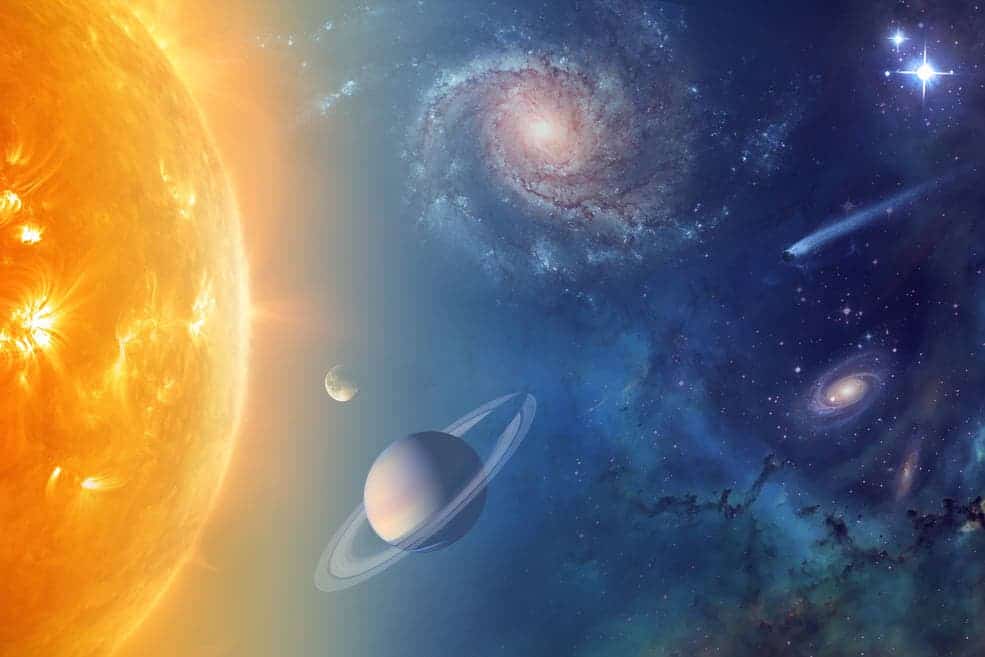NASA is doing the old ‘announcement of an announcement,’ and we’re absolutely falling for it.

Last time NASA had a major announcement to do, they told us about seven Earth-sized planets in a nearby solar system, so we’re allowed to get a little bit excited. The press release doesn’t say much, but it does mention that it’s all about “ocean worlds in our solar system.” So what are we looking at here?
There are eight potential water worlds in our solar system (not including Earth). Starting from the farthest to the closest, we have:
a. The unlikelies
- Pluto, a world of unknowns, might have a subsurface ocean. We don’t know, it’s really far away and hard to explore… unlikely to be the center of this announcement.
- Triton, a moon of Neptune, is also extremely far and not particularly much is known about it.
- Mimas, a moon of Saturn, almost certainly hosts a subsurface ocean, but its sister moons Titan and Enceladus are much more attractive.
- Callisto, another moon of Saturn, might host life beneath its icy crust, but the ice is estimated to be approximately 100 km (60 miles) thick — much thicker than Titan and Enceladus, and much harder to explore.
b. The potentials
- Titan, Saturn’s moon, holds a salty subsurface ocean as well as hydrocarbon surface oceans, which NASA has already announced it wants to explore someday. It’s one of the most likely places in the solar systems to host life (outside of Earth, of course).
- Enceladus, another moon of Saturn (yes, Saturn has a lot of moons), is perhaps even more interesting because it features tectonic activity and shoots geysers from deep beneath its crust. It too is one of the likely places to host life.
- Ganymede, Jupiter’s moon, is the largest moon in the solar system, and the only one to have a magnetic field — which makes it much more interesting. It too is thought to harbor a subsurface ocean, and perhaps several layers of water between its surface and its core.
c. The big gun
- Europa has long been touted as the best place to search for extraterrestrial life. NASA also mentioned Europa and the Cassini mission directly in their statement. In fact, they say that “this will help inform future ocean world exploration — including NASA’s upcoming Europa Clipper mission planned for launch in the 2020s — and the broader search for life beyond Earth.” So my money is on something connected to Europa.
You can watch the announcement live at 2PM ET.
As it usually happens, the panel will also tell us much about the nature of the announcement. This time, the panel will feature:
- Thomas Zurbuchen, associate administrator, Science Mission Directorate at NASA Headquarters in Washington
- Jim Green, director, Planetary Science Division at NASA Headquarters
- Mary Voytek, astrobiology senior scientist at NASA Headquarters
- Linda Spilker, Cassini project scientist at NASA’s Jet Propulsion Laboratory in Pasadena, California
- Hunter Waite, Cassini Ion and Neutral Mass Spectrometer team lead at the Southwest Research Institute (SwRI) in San Antonio
- Chris Glein, Cassini INMS team associate at SwRI
- William Sparks, astronomer with the Space Telescope Science Institute in Baltimore.
With such a large and varied panel, I’d dare say it’s big enough to cover most aspects of a full-scale exploration mission, so that’s perhaps what we’ll be seeing. Can we dream for a hands-on mission to Europa, or some other frozen moon with a subsurface ocean? Is this something bigger from NASA’s search for life strategy? We’ll have to stay tuned to find out but whatever it is, water worlds are more appealing than ever.
If you want to get involved in the upcoming press conference, you can ask questions during the briefing using #AskNASA.


